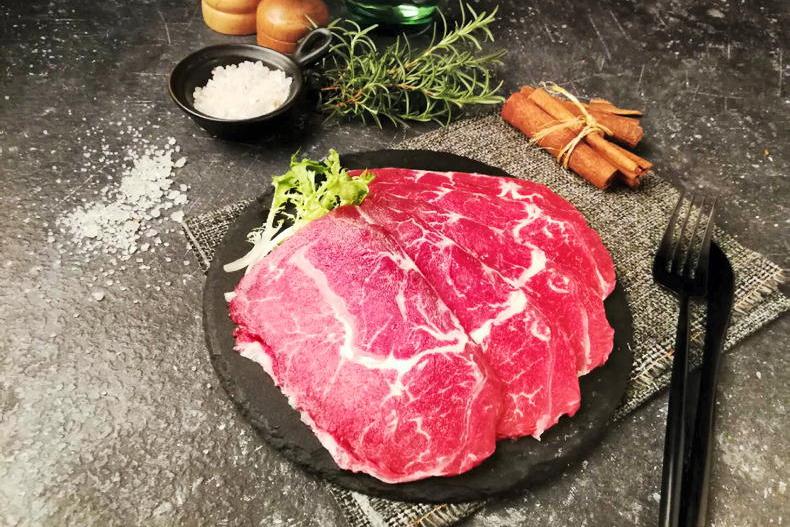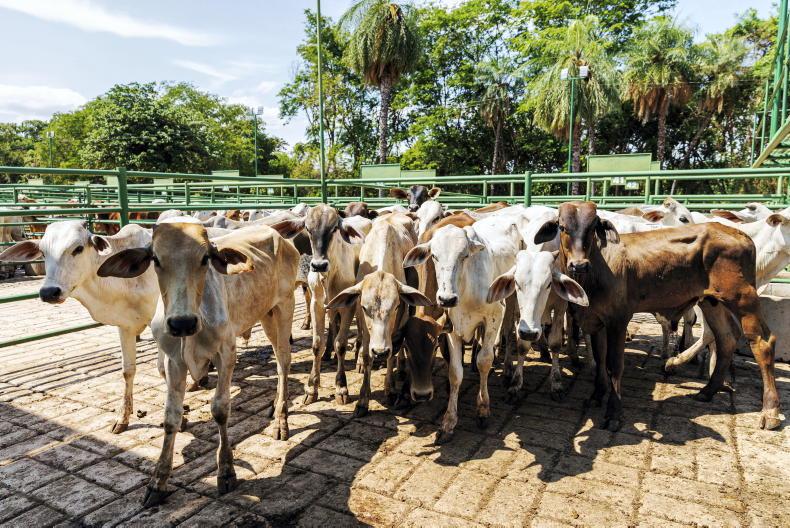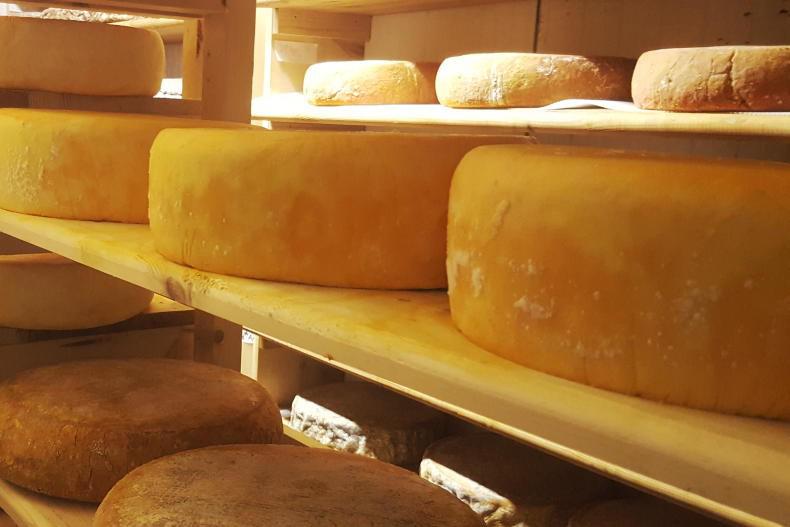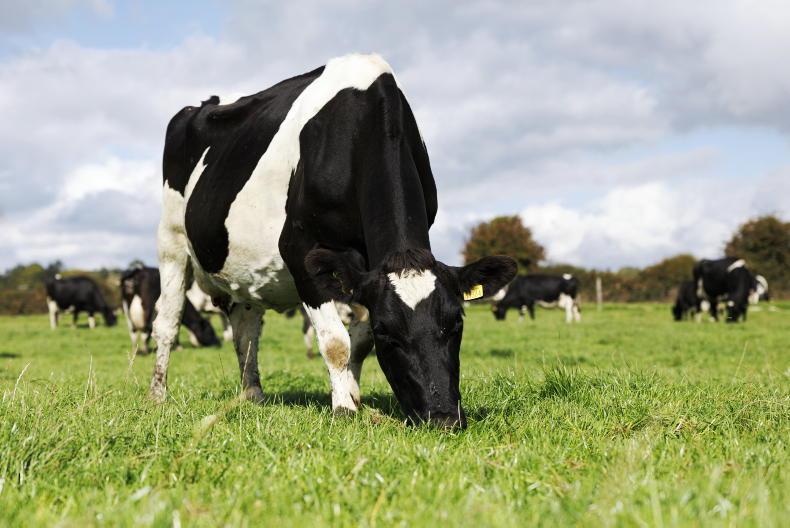Beef and sheepmeat sales in Britain are hit by rising consumer price inflation, with sales of beef down 9% in the 12 weeks ending 4 September, though the money spent by consumers was virtually the same.
This means that rising retail prices for beef, which increased by 9.8% in the period, have resulted in consumers buying less beef and switching from higher-cost products such as steaks and roasts to cheaper mince and burgers.
For the rolling 12-month period ending 4 September, the drop in volume sales was even higher at 12.5% and consumer spend was down 5% year on year, as retail prices increased by 9.8%, according to AHDB/Kantar data.
The biggest fall in the quarter ending was in the roast beef category, which was down 2,469t, a massive 31% decline compared with the same quarter last year.
Retail sales of stewing meat also fell sharply, down by 788t, but because it is a smaller category, that represents a 20.8% decline.
Steak meat fared little better, with the volume of sales down by 1,994t or 1.5%, while mince sales declined by 1,464t, which is a 4.8% decline.
Food service gains as retail loses
While inflation pressures are causing consumers to prioritise their retail spending, there is still a COVID-19 element that has to be considered.
AHDB data for the 12 months to June 2022 shows a massive 32.7% increase in the food service or out-of-home eating market. This is compared with the period between June 2020 and June 2021 which was the height of the pandemic lockdown.
This decline in retail demand has been reflected in the drop in the volume of fresh beef imported from Ireland.
It suggests that as retail sales declined, catering and food service sales increased
In the period from January until end of July, AHDB data shows that 63,151t of fresh beef was imported from Ireland compared with 67,379t in the same period in 2021.
The overall level of fresh beef imports were, in fact, marginally higher in this period compared with last year at 82,665t.
As supermarkets source beef from only the UK and Ireland, it suggests that as retail sales declined, catering and food service sales increased.
China continues to grow
Although the rate of increase has slowed down compared with recent years, there is still a healthy growth in Chinese beef imports.
In the period between January and August 2022, China imported 1.695m tonnes of beef, which is a healthy increase on the 1.517m imported in the same period last year.
Brazil remains the top supplier, sending 623,850t during this period, up from 580,973t in the same period last year.
Argentina remains in second place on 315,359t, with Uruguay third on 266,226t.
Between them, these three South American countries supply almost three quarters of China’s beef imports.
The USA has now also become a major supplier, sending 112,115t in the first eight months of this year, up from 83,241t in the same period last year (Source: Bord Bia/China Customs).
Irish farmers can only look at how the US has increased beef sales to China with envy.
Irish beef exports to China were ahead of the US, until they were suspended in May 2020 because of a BSE case and have never resumed.
There is something of an indirect benefit, because before the Chinese beef market took off over the past decade, Europe was the main destination for higher-value South American beef exports.
They have a market now for 1.2m tonnes of beef in the first eight months of this year that didn’t exist a decade ago.
That, of course, brings its own risk, as Irish pig farmers know too well.
If China develops its own production capability or for any reason stops buying beef, then all this beef will have to find a home and Europe would be a primary target.
Britain will remain the main outlet for Irish beef exports of all types and, of course, competition is on its way there too when the new trade deals with Australia and New Zealand come into effect either late this year or early 2023.
Read more
US beef exports continue to soar
Less beef demand in China puts spotlight on EU and UK
Beef and sheepmeat sales in Britain are hit by rising consumer price inflation, with sales of beef down 9% in the 12 weeks ending 4 September, though the money spent by consumers was virtually the same.
This means that rising retail prices for beef, which increased by 9.8% in the period, have resulted in consumers buying less beef and switching from higher-cost products such as steaks and roasts to cheaper mince and burgers.
For the rolling 12-month period ending 4 September, the drop in volume sales was even higher at 12.5% and consumer spend was down 5% year on year, as retail prices increased by 9.8%, according to AHDB/Kantar data.
The biggest fall in the quarter ending was in the roast beef category, which was down 2,469t, a massive 31% decline compared with the same quarter last year.
Retail sales of stewing meat also fell sharply, down by 788t, but because it is a smaller category, that represents a 20.8% decline.
Steak meat fared little better, with the volume of sales down by 1,994t or 1.5%, while mince sales declined by 1,464t, which is a 4.8% decline.
Food service gains as retail loses
While inflation pressures are causing consumers to prioritise their retail spending, there is still a COVID-19 element that has to be considered.
AHDB data for the 12 months to June 2022 shows a massive 32.7% increase in the food service or out-of-home eating market. This is compared with the period between June 2020 and June 2021 which was the height of the pandemic lockdown.
This decline in retail demand has been reflected in the drop in the volume of fresh beef imported from Ireland.
It suggests that as retail sales declined, catering and food service sales increased
In the period from January until end of July, AHDB data shows that 63,151t of fresh beef was imported from Ireland compared with 67,379t in the same period in 2021.
The overall level of fresh beef imports were, in fact, marginally higher in this period compared with last year at 82,665t.
As supermarkets source beef from only the UK and Ireland, it suggests that as retail sales declined, catering and food service sales increased.
China continues to grow
Although the rate of increase has slowed down compared with recent years, there is still a healthy growth in Chinese beef imports.
In the period between January and August 2022, China imported 1.695m tonnes of beef, which is a healthy increase on the 1.517m imported in the same period last year.
Brazil remains the top supplier, sending 623,850t during this period, up from 580,973t in the same period last year.
Argentina remains in second place on 315,359t, with Uruguay third on 266,226t.
Between them, these three South American countries supply almost three quarters of China’s beef imports.
The USA has now also become a major supplier, sending 112,115t in the first eight months of this year, up from 83,241t in the same period last year (Source: Bord Bia/China Customs).
Irish farmers can only look at how the US has increased beef sales to China with envy.
Irish beef exports to China were ahead of the US, until they were suspended in May 2020 because of a BSE case and have never resumed.
There is something of an indirect benefit, because before the Chinese beef market took off over the past decade, Europe was the main destination for higher-value South American beef exports.
They have a market now for 1.2m tonnes of beef in the first eight months of this year that didn’t exist a decade ago.
That, of course, brings its own risk, as Irish pig farmers know too well.
If China develops its own production capability or for any reason stops buying beef, then all this beef will have to find a home and Europe would be a primary target.
Britain will remain the main outlet for Irish beef exports of all types and, of course, competition is on its way there too when the new trade deals with Australia and New Zealand come into effect either late this year or early 2023.
Read more
US beef exports continue to soar
Less beef demand in China puts spotlight on EU and UK










SHARING OPTIONS